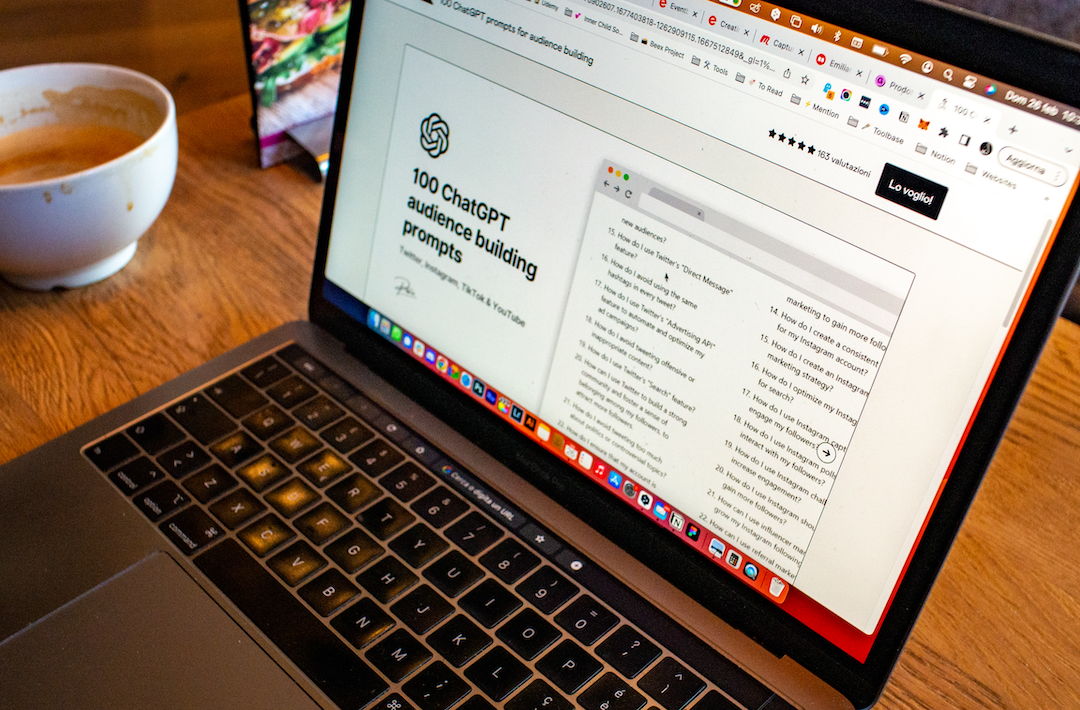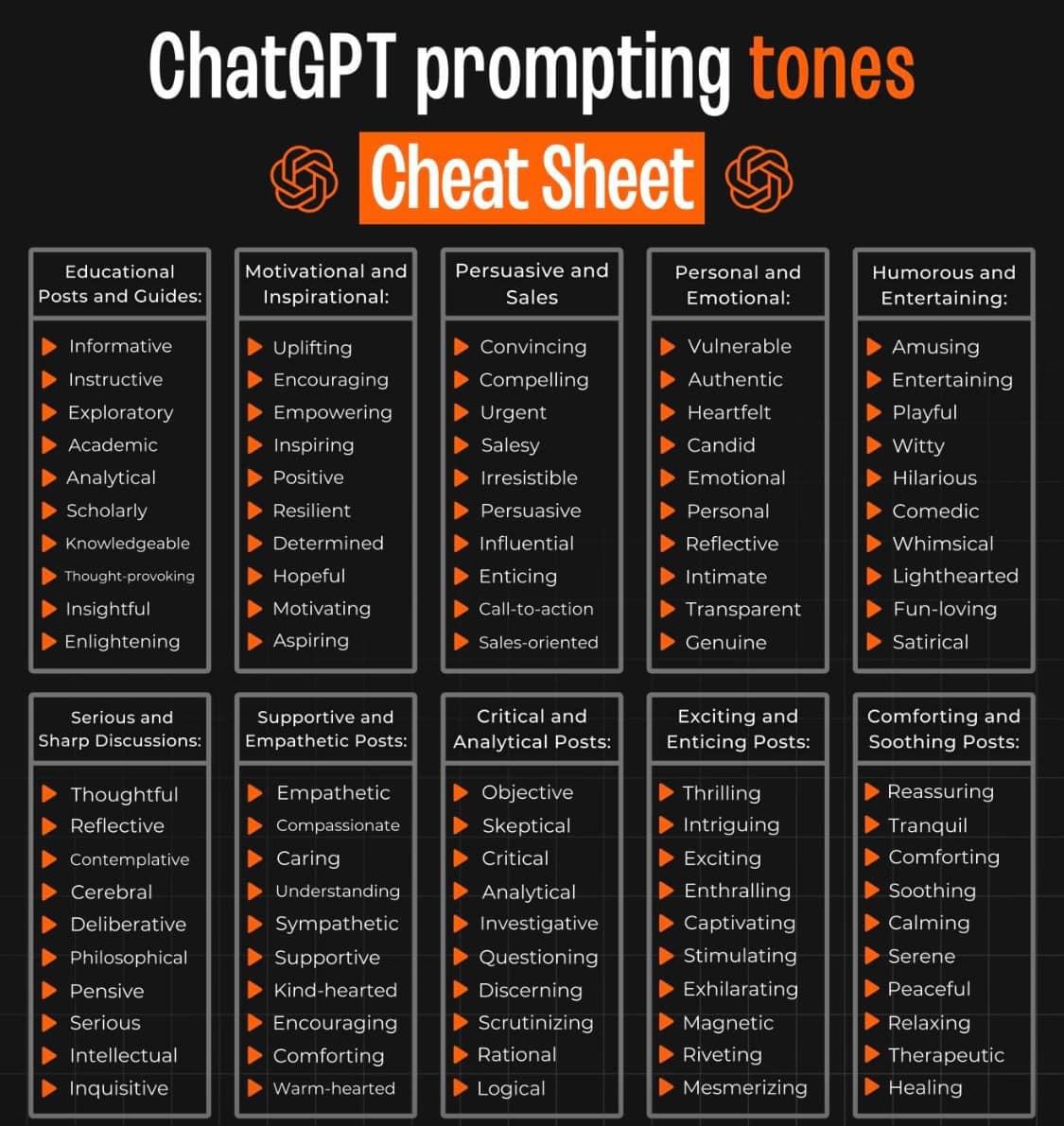
We live in an era where AI will help us with many "complicated" tasks. We ask AI what we want, and AI will generate responses that answer our queries. To produce useful responses, we have to craft "prompts" that will induce the responses we want.
Prompt engineering refers to the process of crafting effective prompts for a language model like GhatGPT and Bard. It involves carefully constructing the input text to elicit specific responses from the AI model. By using well-designed prompts, developers and users can guide the model to produce desired outputs, whether it's generating creative stories, answering questions, or assisting with various tasks. Effective prompt engineering can significantly improve AI's performance and usability. As AI models become more powerful, prompt engineering will become even more important for unlocking their full potential.
What is AI prompt?
An AI prompt is a form of a question, text, data, or code that is communicated to AI to obtain the desired response you're looking for. To create effective AI prompts, it is important to be specific, and descriptive, provide examples, evaluate the complexity of the task, and keep the intended audience in mind.
What is AI Prompt Engineering?
The basics of prompt engineering is to understand the capabilities and limitations of AIs. Once you understand what an AI can do, you can start to craft prompts that will help it generate the desired output. For example, if you want an AI to write a story, you might start by providing it with a few examples of a story that you like. You could also provide it with some scenarios that you want to include in the story.

As you experiment with different prompts, you will start to learn how to improve the quality of the output. You will also learn how to use prompts to generate different types of outputs. For example, you could use prompts to generate different creative text formats, like stories, poems, code, musical pieces, emails, letters, and more.
What different types of prompts are there?
There are many different types of prompts that can be used to generate text with AIs. The type of prompt you use will depend on the task you want the AI to perform.
1. Generating text
You could use prompts to generate text that you want to write. For example, you could use a prompt to generate a cover letter for your resume.
2. Translating languages
You could use prompts to translate text from one language to another. For example, you could use a prompt to translate a text from English to Spanish.
3. Writing creative content
You could use prompts to write different kinds of creative content, such as poems, stories, scripts, and musical pieces. For example, you could use a prompt to write a poem about love or a story about an AI.
4. Answering questions
You could use prompts to answer your questions in an informative way. For example, you could use a prompt to ask an AI about the scientific principles behind gravity.
What are the key aspects of good prompts?
Garbage in garbage out! To generate the response you want, you'll have to craft effective prompts AI can understand. The key aspects of good prompt engineering include:
1. Clarity
The prompt should be clear and concise so that the AI can understand what you are asking it to do.
2. Specificity
The prompt should be specific so that the AI can generate the desired output. For example, if you want an AI to write a poem about love, you should provide it with some specific instructions, such as the length of the poem, the rhyme scheme, and the topic of the poem.
3. Context
The prompt should provide context for the AI so that it can generate the desired output. For example, if you want an AI to translate a text from English to French, you should provide it with some context, such as the topic of the text or the genre of the text.
4. Creativity
The prompt should be creative so that the AI can generate unexpected and interesting outputs. For example, you could use a prompt to ask an AI to write a poem about a robot that falls in love with a human.
5. Iteration
The prompt should be iterative so that you can improve the output by experimenting with different prompts. For example, you could start with a simple prompt and then add more context or specificity as you experiment. Here are some additional tips for good prompt engineering:
- Use keywords and phrases: Use keywords and phrases that are relevant to the task you want the AI to generate. For example, if you want an AI to write a cover letter for your resume, you can provide your qualifications, strengths, past experiences, and roles you've played in past jobs.
- Use examples: If you can, provide examples of the output you want the AI to generate. This will help the AI understand what you are asking for.
- Be patient: It may take some time to find the right prompt for the task you want the AI to perform. Be patient and keep experimenting until you find a prompt that produces the desired output.
Prompt engineering is a complex and challenging task, but it is also very rewarding if you master it. By following these tips, you can learn how to craft prompts that will help AI generate high-quality, creative, and informative outputs.
Conclusion
Prompt engineering involves translating human language into a format that AI can comprehend. It acts as a bridge between human language and AI language. This is similar to being really good at using Google search, where experts can quickly find the right answers by using the right keywords, unlike someone who isn't as familiar with it. This distinction arises because experienced users grasp what an AI anticipates, and produce the responses they want by providing the prompts AI understands.
Share this post
Leave a comment
All comments are moderated. Spammy and bot submitted comments are deleted. Please submit the comments that are helpful to others, and we'll approve your comments. A comment that includes outbound link will only be approved if the content is relevant to the topic, and has some value to our readers.




Comments (1)
Here are a few cheatsheets you can use.

Jan 04, 2024 at 09:26 AM